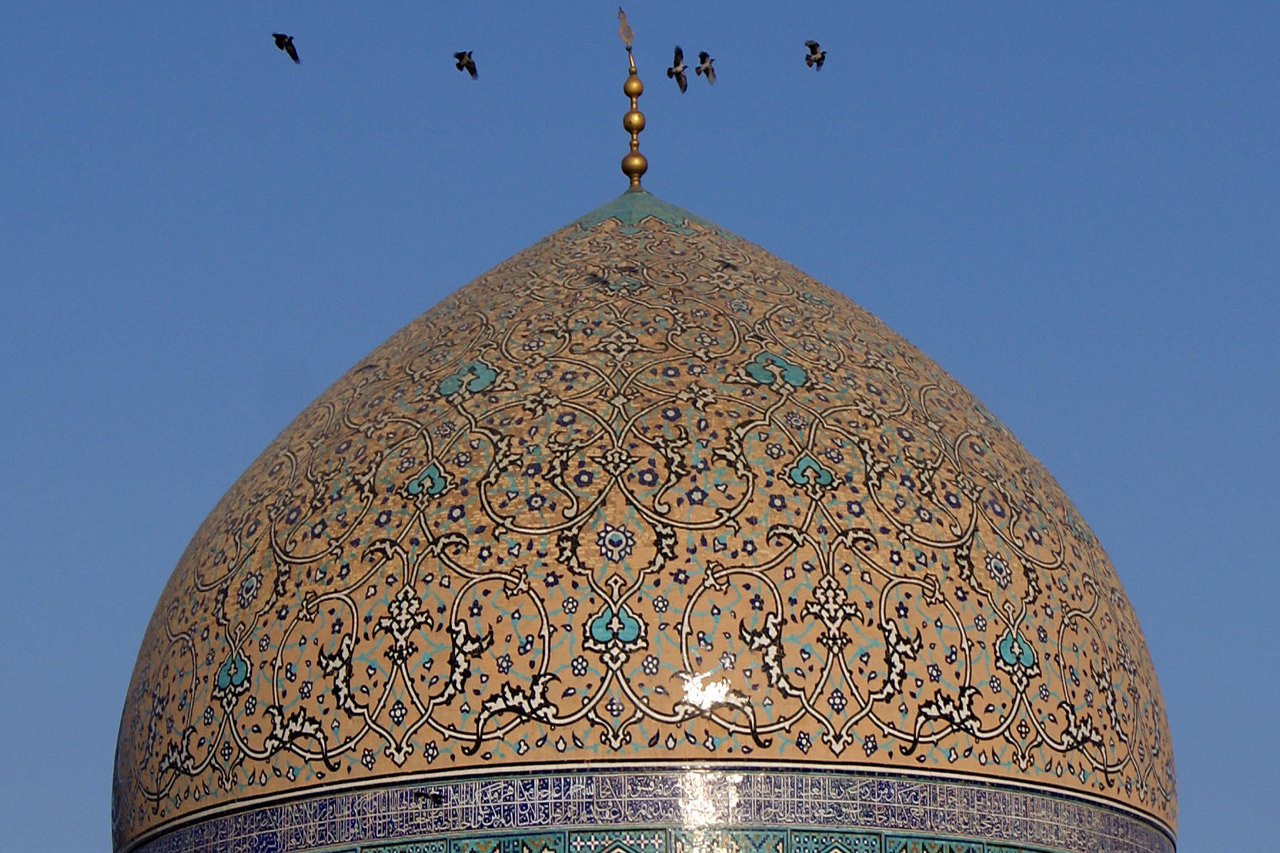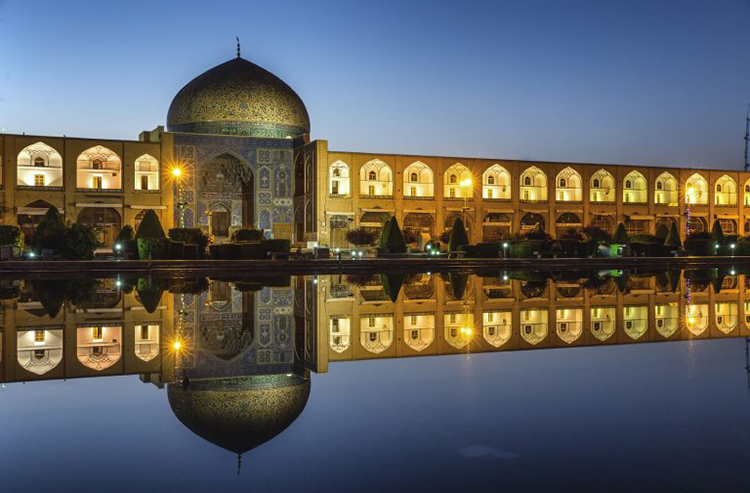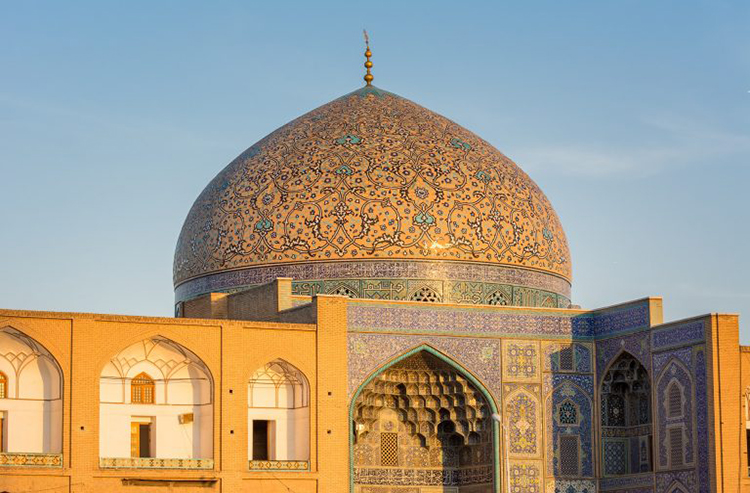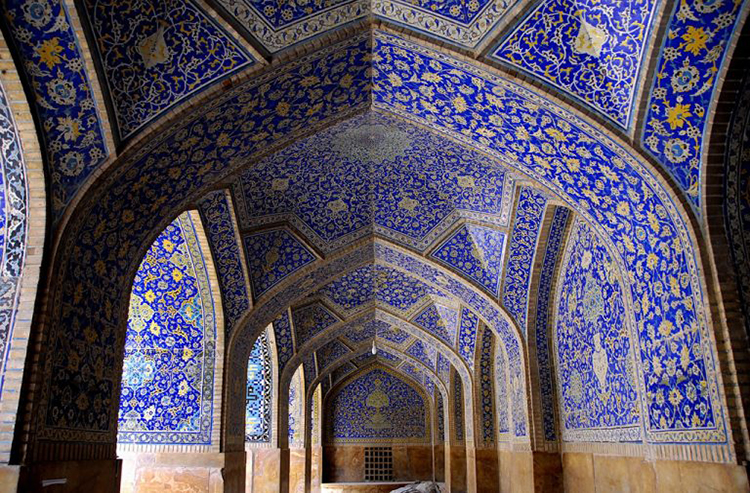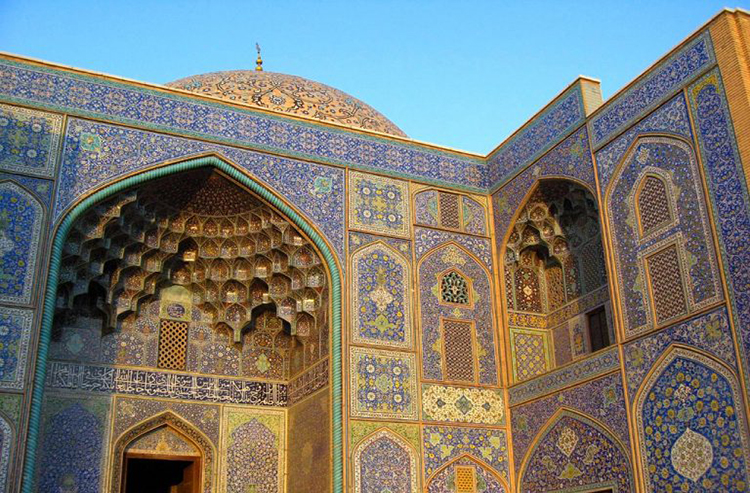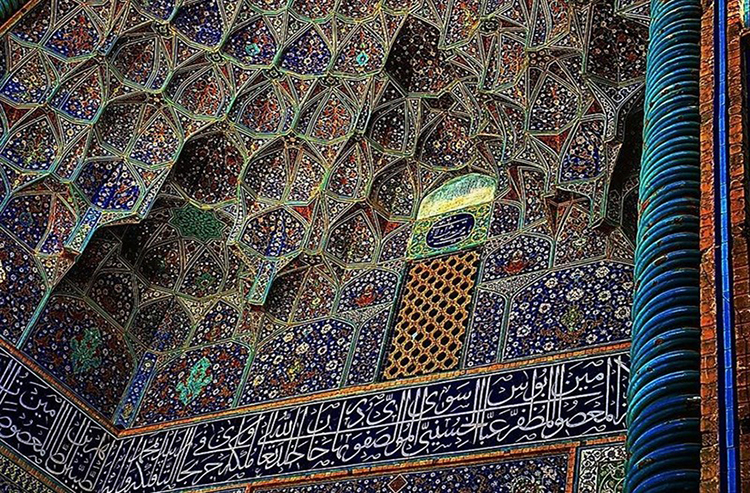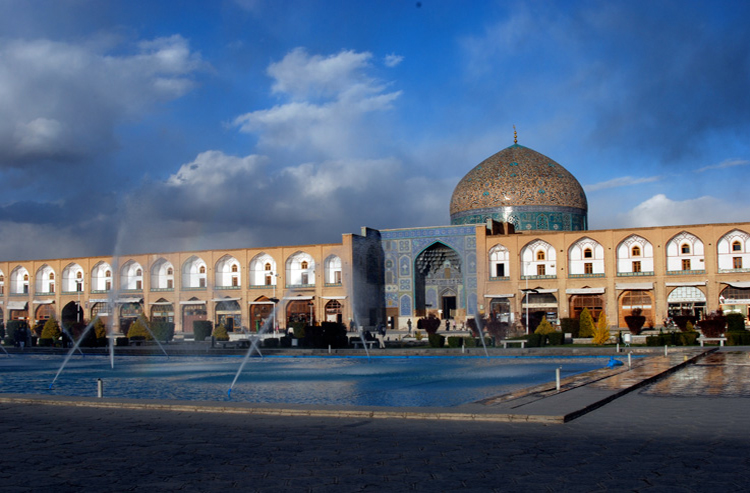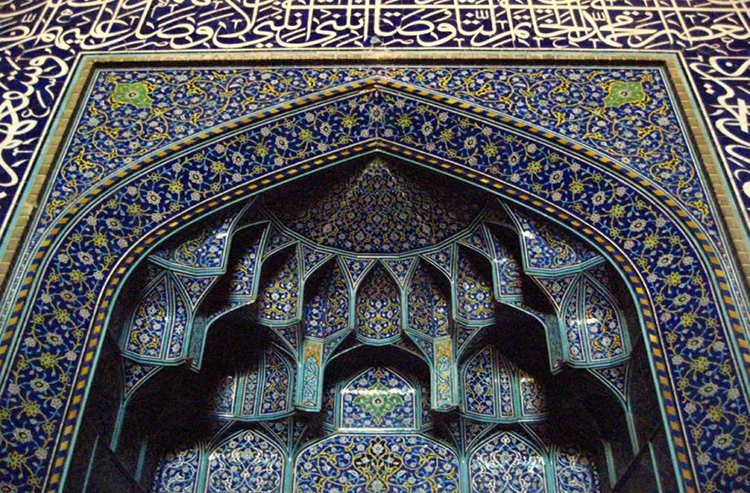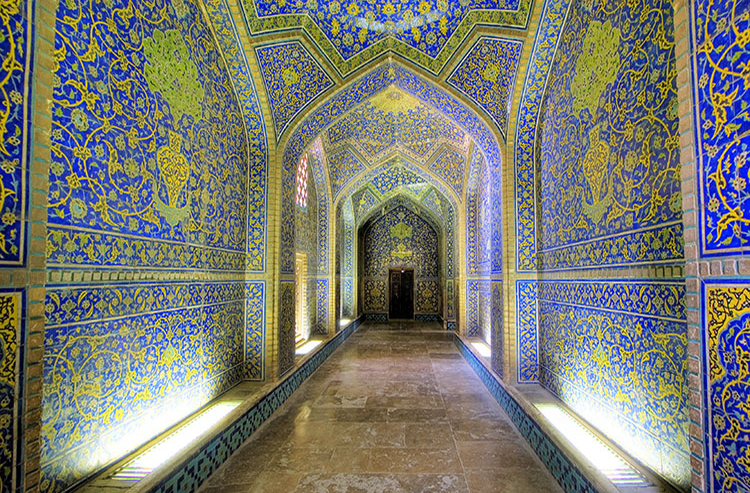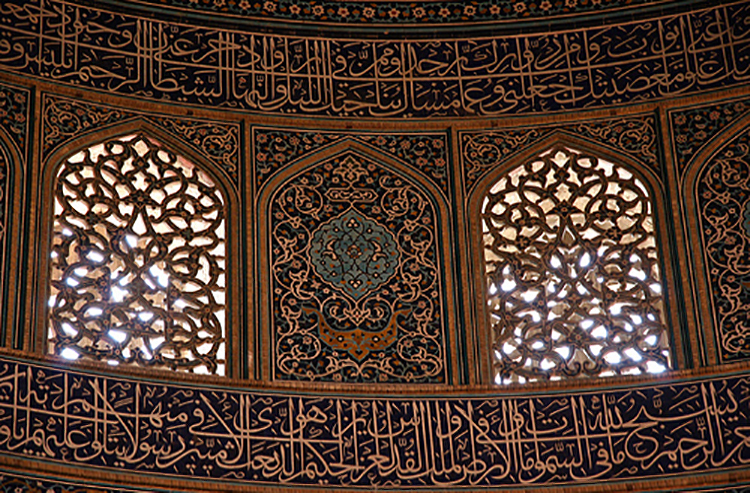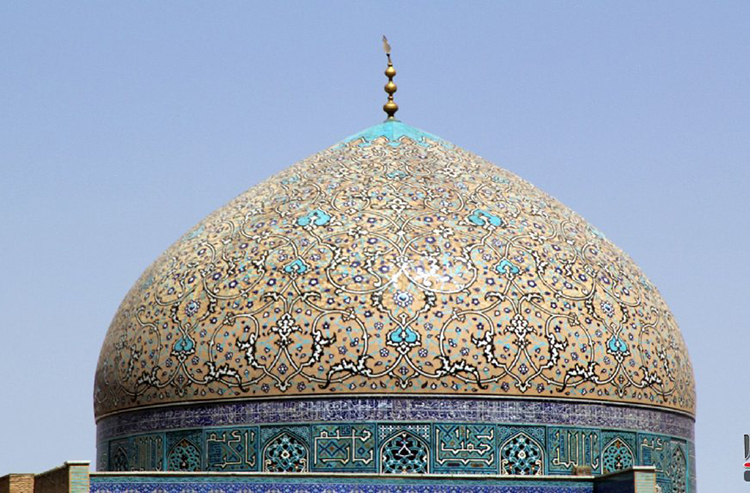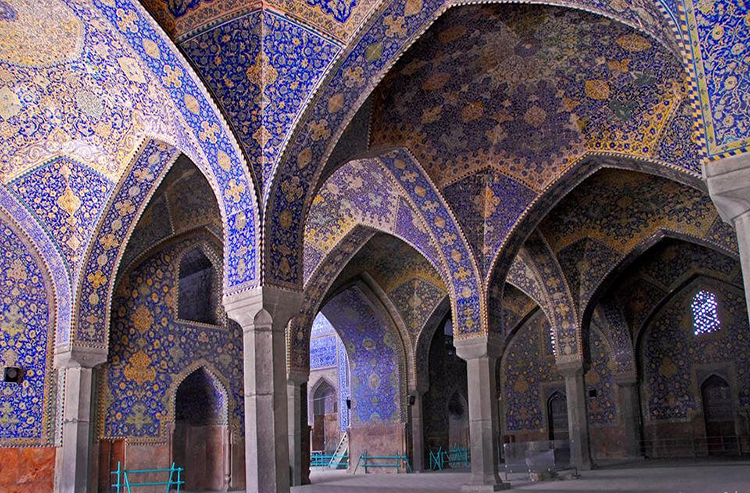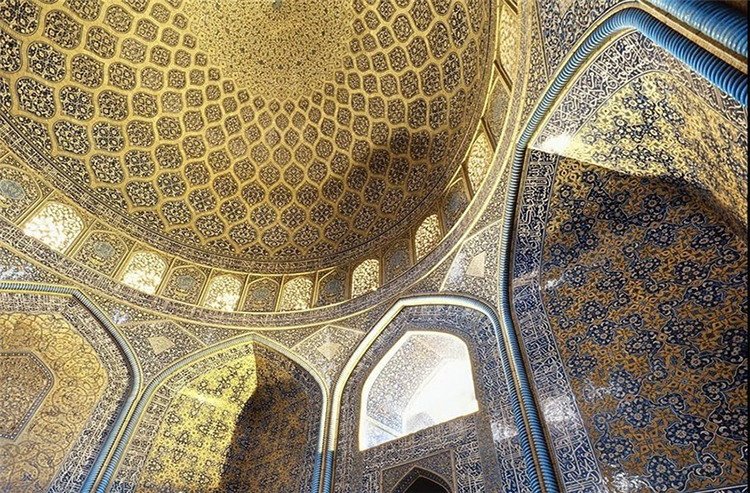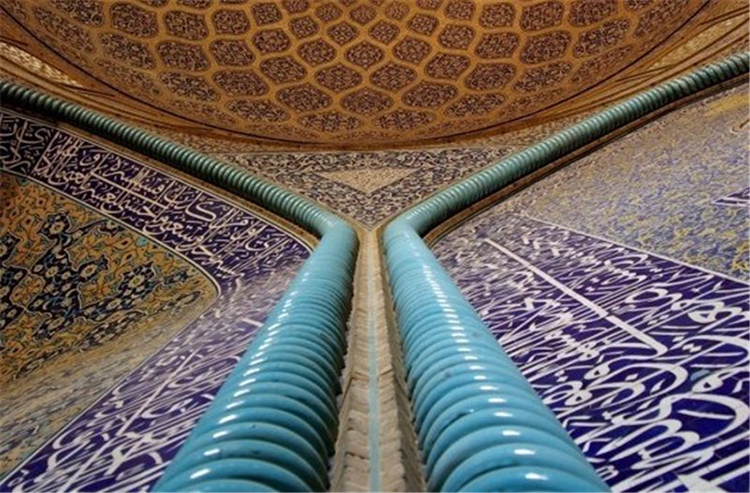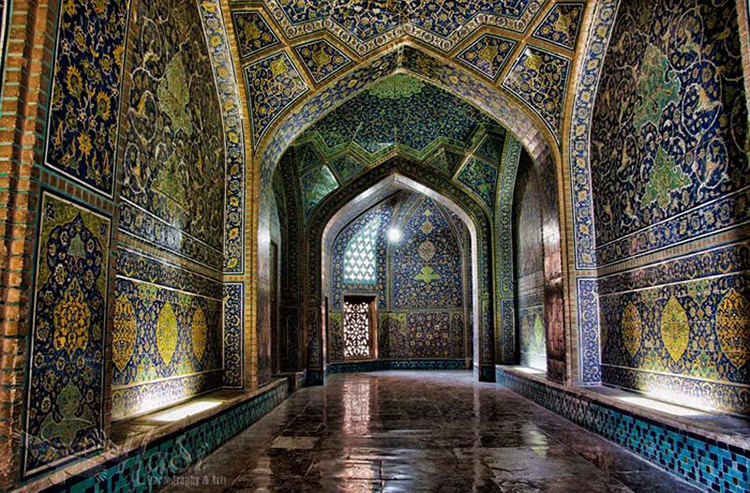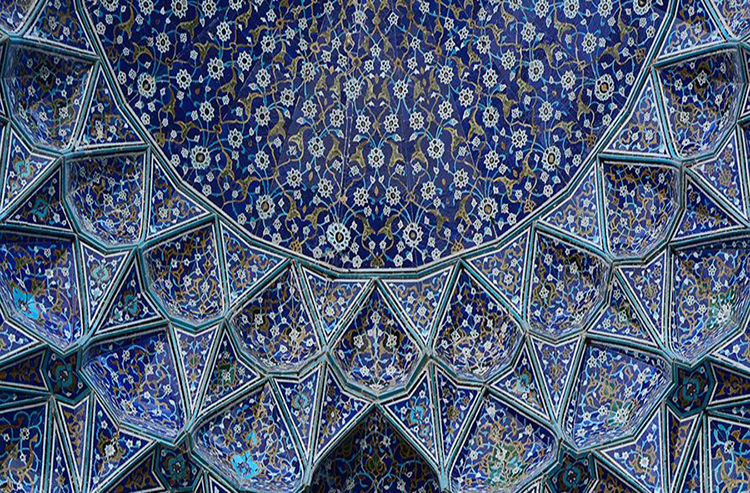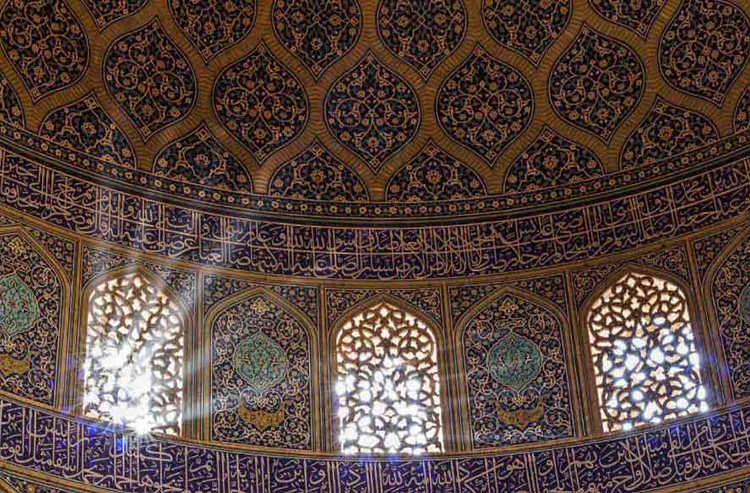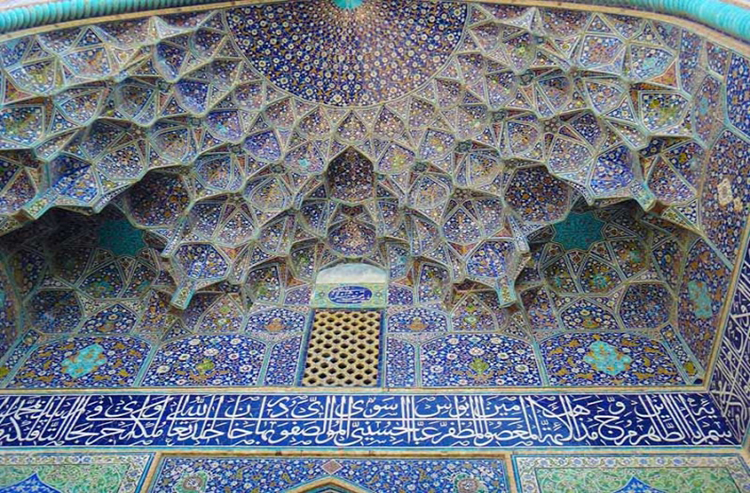Sheikh Lotfollah Mosque
Sheikh Lotfollah Mosque is a famous masterpiece of Iranian architecture, standing on the eastern side of Naqsh-e Jahan Square, the first built of the four monuments of the square. The mixture of modest shape and rich interior and exterior tile ornaments made the mosque one of the most recognizable tourist sites of Isfahan.
History of Sheikh Lotfollah Mosque
Sheikh Lotfollah was built between 1603 and 1619 as a part of Naqsh-e Jahan Square complex by decision of Shah Abbas. Since Ali Qapu Palace, located on the west side of the square, was a residence of the Shah and his family, the complex needed a mosque that would be appropriate for the Shah to pray and also comply with the beauty and majesty of the square. Unlike the Imam Mosque, which was designed for public praying, Sheikh Lotfollah Mosque was the private mosque for the family of Shah Abbas. The doors of the mosque were always closed and guarded, so ordinary people could admire the mosque only after centuries. To avoid being seen while crossing the square from Ali Qapu Palace to the mosque, Shah and his wives used a tunnel under the square.
Sheikh Lotfollah was one of Shiite prominent, preachers and clergies who came from Jabal Amel in Lebanon to Isfahan. The Shah Abbas supported him and the Sheikh took up residence in Isfahan and the sheikh Lotfollah mosque was named after him. The mosque was used as a Theological school and also as a royal mosque.
Architecture of Sheikh Lotfollah Mosque
Due to the fact that Sheikh Lotfollah Mosque was designed to be a private mosque, it is smaller than Imam Mosque, and has no minarets. Naqsh-e Jahan Square, in contrast with the most important structures in Iran, does not follow the direction of Mecca, so Shaykh Bahai, the chief architect of the project, faced a challenge while designing two mosques of the square. Like Imam Mosque, Sheikh Lotfollah Mosque has an entrance portal that turns right, forcing the visitor to face the direction of Mecca when entering the mosque. The paintings and interior tiles were made by Reza Abbasi, famous Iranian artist, and its quality and beauty overcome exceed anything created In Iran before. The walls, dome, entrances of the mosque are decorated with the so-called seven-color tiles, calligraphy, inscriptions of some chapters from Quran, names of Imams, and poetry.
The entrance of the mosque is located opposite of Ali Qapu palace. As soon as we enter the mosque, we pass through a dim- lit corridor which is connected to the sanctuary of the mosque. The mentioned corridor was built for two purposes. First when entering the sanctuary our face will be in direction of Mecca (Qibleh). Second light outside the mosque is sharp and strong, but in the main parts (sanctuary) light is dim. Passing through the dim- lit corridor for few seconds, our eyes will be adjusted to dim light and when we enter the main part, we will be able to see the glory and beauty of the mosque as real as possible.
The mosque is famous for calligraphies made of tile- mosaic, for excellent patterns and designs of tile- mosaic which has decorated major parts of portal, corridor and the main sanctuary. Splendid blue, yellow and cream colours of tile- mosaics are unique all over the world. The dome of sanctuary (Prayer Hall) and polychromes of tile and tile mosaic are splendid. The back- ground of tile mosaic designs is unglazed cream colours bricks. The Solth calligraphy of interior and exterior parts is the best kind in the Islamic world of art and architecture. Calligraphy is written in azure blue with white back- ground.
Ali Reza Abbasi one of the most famous calligraphers of Iran has written major parts of mentioned calligraphy.
The prayer hall was built on a square plan which is converted into a circular base the dome is located on the top of it. The area of the mosque is 1324 square meters, and the dome is 32 meters high and also 12 meters in diameters. There are 16 windows around the lower part of the dome with equal size and shape and equal intervals. These windows reflect day- light to upper parts of dome just like flood- lights.
The prayer- niche of the mosque is decorated with the most delicate tile mosaic. There is a large window located at the north of the mosque, located lower than the drum of dome. This window (aperture) not only circulates the fresh air into the mosque, but also just like flood- light brightens the Mehrab located on the opposite side southern.
There is a winter gallery (Beit-ol-Shata) under the ground level with 16 huge pillars, and simply decorated with mono- colour square tiles and plaster.
There are two small inscriptions in Persian language on two sides of Mehrab's wall, showing name of the architect saying :
"a poor humble man begging the mercy of Allah. Ostad Horrian builder from Isfahan".
The Sheikh Lotfollah mosque is a philosophical complex. Each part of its decoration covers certain religious messages, in fact book must be written regarding facts and message of the ornamentation.
